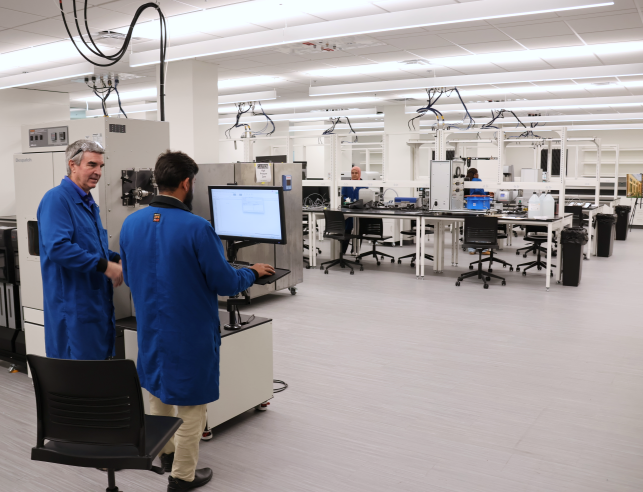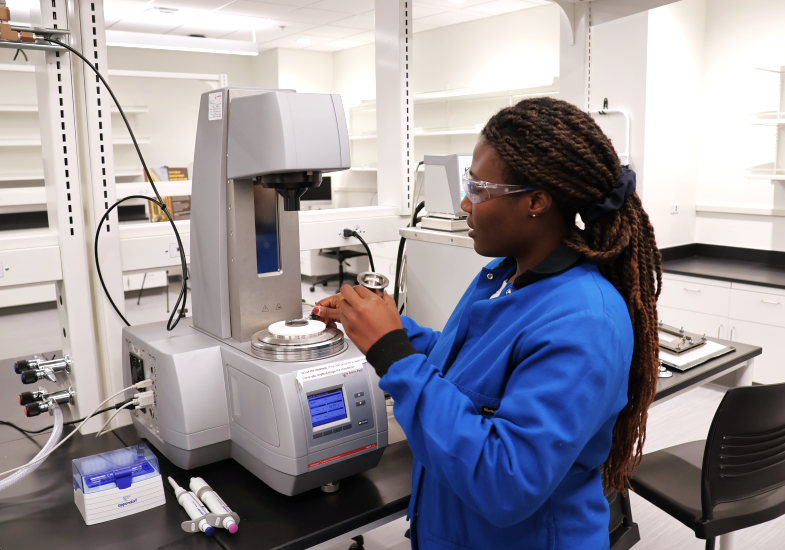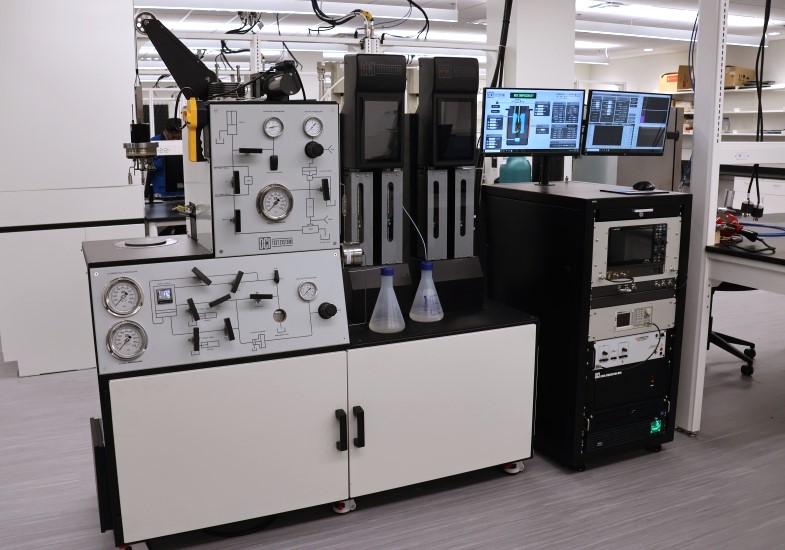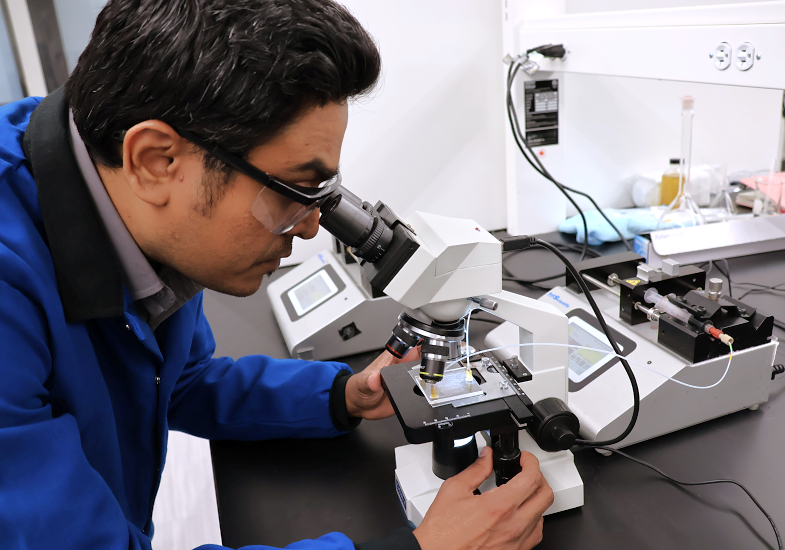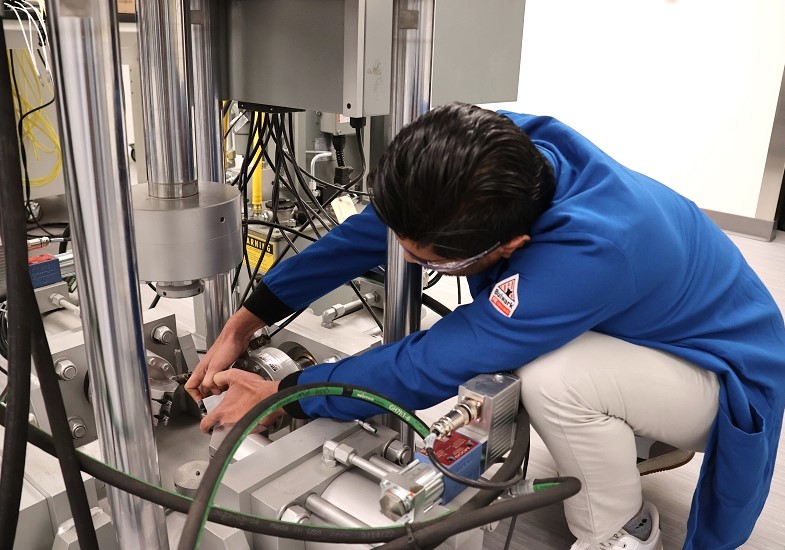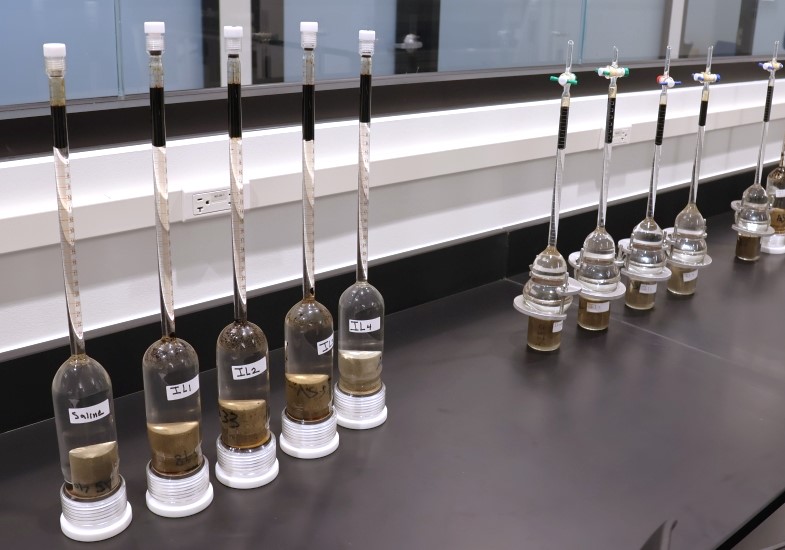State-of-the-Art Research
This state-of-the-art facility, located in the new Science Initiative Building near the College of Engineering and Physical Sciences and the UW School of Energy Resources (SER), aims to pioneer advanced research and technologies to revolutionize primary recovery techniques in unconventional reservoirs. Additionally, MASL will collaborate closely with other SER Centers of Excellence, including the Subsurface Energy and Digital Innovation (SEDI) Center, to drive breakthroughs in reservoir stimulation, datadriven optimization, and advanced recovery strategies.
Beyond advancing its own research initiatives, MASL will generate valuable data and insights that benefit other UW Centers of Excellence, such as SEDI. By providing a robust foundation for cross-disciplinary research and technology development, MASL will strengthen the overall innovation infrastructure at UW, fostering collaborative growth across multiple research domains.
MASL OBJECTIVES
The Advanced Stimulation Laboratory is central to the department’s effort to elevate the department’s national ranking and research profile. The work in the lab intends to:
|
Moreover, the lab will serve as a hub for pioneering research in subsurface energy systems, such as oil and gas recovery, carbon capture and storage, geothermal energy, and rare earth element extraction. Its multidisciplinary approach will encourage collaboration across various colleges and research centers at UW. The lab will place a strong emphasis on innovative studies in oil and gas, concentrating on areas like geomechanics, proppant testing, proppant placement, wellbore integrity, and the optimization of drilling and fracturing fluids.
Through these specialized research efforts, the Advanced Stimulation Laboratory aims to significantly improve recovery techniques and efficiency in unconventional reservoirs. Leveraging its advanced technology and multidisciplinary expertise, the laboratory is wellequipped to support other subsurface energy systems. This includes carbon capture and storage, geothermal energy, as well as rare earth element characterization and extraction. This broad scope ensures the facility's relevance across various cutting-edge energy applications.
Areas of Research
Stimulation Fluids and Proppant Transport Systems
Design, testing, and optimization of hydraulic fracturing fluids, proppant materials, fluid-fluid and fluid-rock compatibility, and placement techniques to enhance recovery in unconventional reservoirs.
Rock Physics, Geomechanics, and Geological Engineering
Experimental studies on the mechanical behavior of reservoir rocks under subsurface conditions, with applications in stimulation design, wellbore integrity, and formation evaluation.
Multiscale Reservoir Characterization and Petrophysics
Integrated workflows combining core analysis, organic matter characterization, digital rock physics, and geophysical data for characterizing pore structures, thermal maturity, mineralogy, fluid flow, and heterogeneity across scales.
Innovative Drilling Technologies
Development and testing of novel drilling methods to improve efficiency, safety, and recovery in challenging formations.
AI and Machine Learning for Subsurface Operations
Leverage laboratory and field datasets to develop AI- and ML-driven models that enhance operational efficiency, optimize stimulation design, and improve decision-making in real time.

